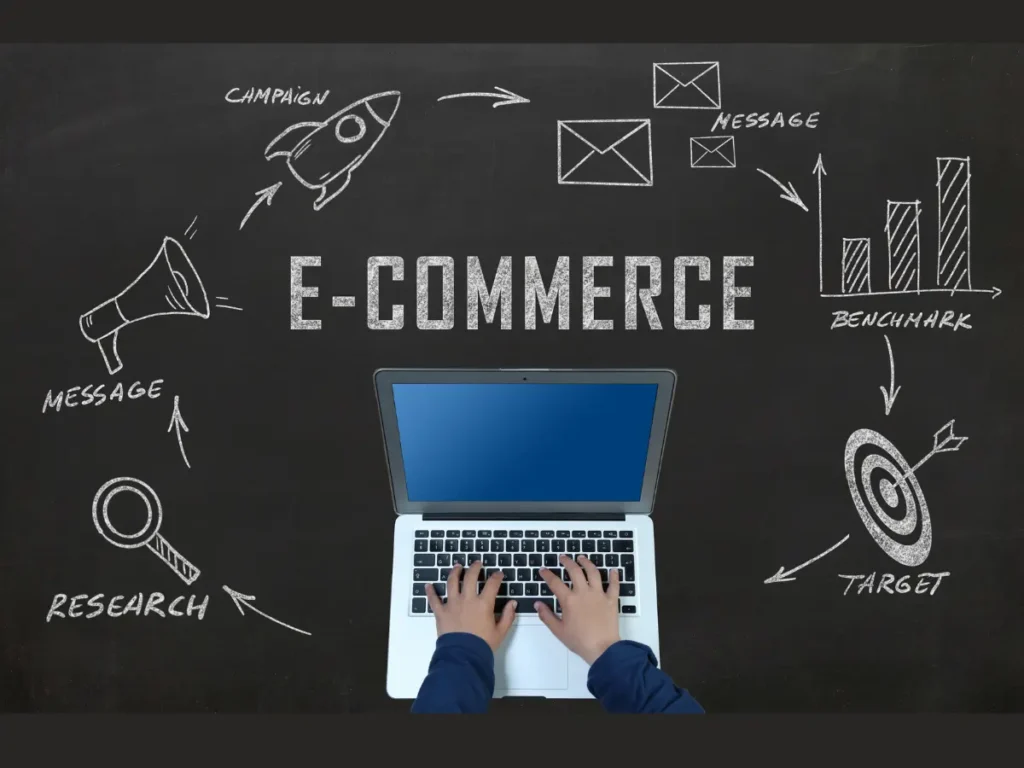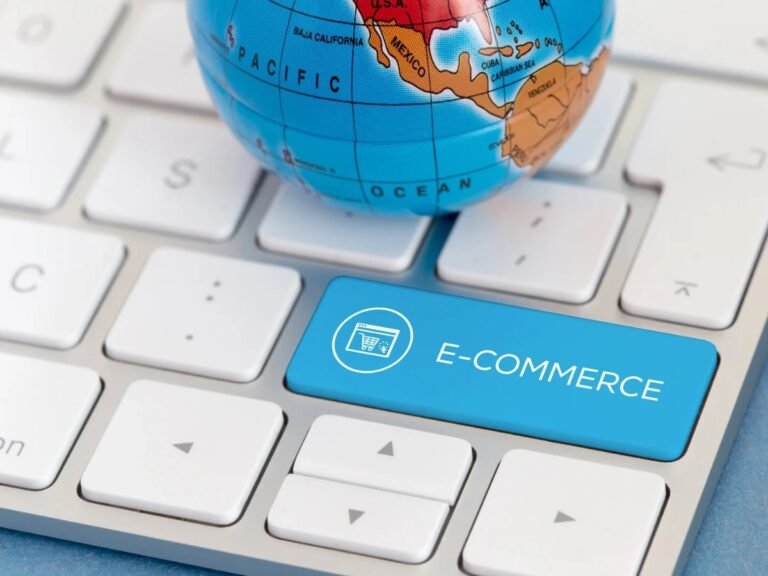
Technology has been a driving force behind the rapid growth of e-commerce, transforming how a lot of businesses operate and how consumers shop. E-commerce sales worldwide reached $4.9 trillion in 2021 and are projected to grow to $7.4 trillion by 2025.
Today, its growth is not just limited to retail. It encompasses various sectors, including digital products, online banking, and even online education. It offers convenience, a wider range of products, competitive prices, and the ability to shop 24/7.
In this article, we will be discussing the impacts of technology on e-commerce growth, how technology is influencing various facets of e-commerce growth.
The Impacts of Technology on E-commerce Growth
There are various impacts where technology has greatly changed e-commerce, making it grow and evolve. To understand how important these changes are, we need to look at the different technologies that have shaped online shopping.
1. Improved User Experience
Personalization: Advanced algorithms analyze customer data to provide personalized shopping experiences, such as product recommendations and tailored marketing messages. E-commerce platforms can anticipate customer needs and preferences to enhance engagement and loyalty.
User Interface and User Experience (UI/UX): A well-designed e-commerce site makes shopping easier and more enjoyable. By focusing on easy navigation, fast loading, attractive layouts, and user-friendly features, businesses can create a better shopping experience, leading to more satisfied customers and higher sales. Staying up-to-date with design trends and continuously improving the user experience will keep the business competitive and successful.
2. Mobile Commerce (m-commerce)
Mobile Apps: With the rise of smartphones, mobile apps have become a popular way for people to shop. Users can shop anytime and anywhere using their phones. The apps are designed to be fast and user-friendly. They often offer features like one-touch payments and quick access to favorite products.
Responsive Design: It ensures that e-commerce websites look and work well on all types of devices, including smartphones, tablets, and desktops, allowing a seamless shopping experience across all devices.
3. Payment Systems
Digital Wallets: Technologies like Apple Pay, Google Wallet, and PayPal make transactions and payments faster and more secure.
Cryptocurrency: Some e-commerce platforms accept cryptocurrencies, providing an additional payment option and attracting tech-savvy customers.
4. Logistics and Supply Chain Management
Automation: Automation in logistics uses technology to make the process of getting products from warehouses to customers faster and more accurately, reducing delivery times and errors
Tracking Systems: This lets customers check the current location and status of their shipment through an app or website. This keeps them informed about when to expect their delivery.
5. Augmented Reality (AR) and Virtual Reality (VR)
AR and VR technologies make online shopping more interactive and enjoyable by allowing customers to see how products look in their own space or on themselves before making a purchase. This helps them make better decisions and feel more confident about their choices.
6. Social Media Integration
Shoppable Posts: Platforms like Instagram and Facebook offer social media marketing strategies and features that allow users to purchase products while they scroll through their feeds, making it easy to discover and buy products directly from posts.
Influencer Marketing: Brands leverage influencers to promote products, reaching a wider audience and boosting sales. Their recommendations often feel more personal and trustworthy.
7. Data and Analytics
Customer Insights: Analyzing large volumes of data helps businesses understand customer preferences and buying patterns, which leads to better marketing efforts.
Performance Metrics: Businesses can track key performance indicators (KPIs) to measure the effectiveness of their e-commerce strategies and make data-driven decisions to help their businesses succeed.
By leveraging data analytics the right way, you not only gain clarity on what’s working, but you also uncover new growth opportunities. If you’re looking to harness the full potential of your data, our team can help you turn insights into action.
8. Cybersecurity
Security Measures: Advanced encryption and security measures protect customer data and build trust in online transactions.
Fraud Detection: Machine learning models detect and prevent fraudulent activities, safeguarding both businesses and customers.
9. Sustainability
Companies are using materials that are recyclable, biodegradable, or made from recycled sources for packaging. This helps reduce waste and minimizes the environmental footprint of packaging materials.
10. Customer Relationship Management (CRM) Systems
CRM systems help in automating and managing customer interactions, which enhances overall efficiency, automates routine tasks such as sending follow-up emails, scheduling appointments, and managing customer queries, reducing the manual workload on staff, and ensures timely responses. With insights from CRM systems, businesses can create targeted marketing campaigns and offers to improve customer engagement and conversion rates.
E-commerce Platforms
There are several platforms that have contributed so much to the growth and efficiency of online shopping. Some of these ecommerce platforms are:
- Amazon
- eBay
- Shopify
- Alibaba
- Walmart
Each of these platforms has its unique technological features to cater to different market sections and consumer needs, driving innovation and setting new standards in the e-commerce industry.
How to Grow Your E-commerce Business
The growth of e-commerce businesses involves strategic planning, marketing, customer service, and operational efficiency. To expand your e-commerce business plan, you need to go through the following for a successful business:
1. Enhance Your Website
Make sure your website is user-friendly, appealing and visually catching, and mobile-responsive. Optimize page load times, streamline the navigation, and make the process simple and secure. Regularly update your site to maintain users’ interest and keep up with current design trends.
2. Expand Your Product Range
There should be a wider variety of products to attract different customer sections. Market research should be conducted to identify new products that complement and meet customer needs. Expanding your product range can increase sales opportunities and customer retention.
3. Optimize Marketing Strategies
Use digital marketing techniques such as SEO, PPC advertising, email marketing, and social media campaigns to reach a large audience. Personalize your marketing messages based on customer data and behavior to enhance engagement and conversion rates.
To amplify your efforts, consider leveraging targeted paid advertising strategies that drive faster results. Our paid Advertising services are designed to help you reach the right audience at the right time with maximum ROI.
4. Improve Customer Service
It provides excellent customer service to build trust and loyalty. Implement live chat support, respond promptly to customer inquiries, and address issues efficiently, also encourage customer feedback, and use it to improve your services. A positive customer experience can lead to repeat business and positive reviews.
5. Enhance Payment and Security
There should be multiple secure payment options, including digital wallets and cryptocurrencies, to cater to different preferences. Invest in cybersecurity measures to protect customer data and build trust. Implement SSL certificates, two-factor authentication, and regular security audits.
6. Build Trust and Credibility
Showcase customer reviews and testimonials to build credibility. Display trust badges and certifications prominently on your site. There should be clear return policies and guarantees to reassure customers. Transparency and reliability can significantly enhance your brand’s reputation.
7. Expand Your Market Reach
Consider expanding into new geographical regions or targeting new demographics. international shipping options, localized marketing strategies, and translate your website into multiple languages to reach a global audience. You can also partner with local influencers to build brand awareness in new markets.
8. Utilize Emerging Technologies
Stay ahead by adopting new technologies like AI, machine learning, and automation to streamline operations and enhance customer experience. Implement AR/VR for product visualization, chatbots for customer support, and data analytics for personalized marketing. Keeping up with technological advancements can give you a competitive edge and improve operational efficiency.
Conclusion
Technology continues to drive the growth of e-commerce, offering numerous benefits that drive growth, meet customer expectations, and enhance the shopping experience. As technology evolves, e-commerce businesses must adapt and innovate to stay competitive and meet the ever-changing demands of consumers. The exploration of how technology is influencing various facets of e-commerce growth offers insights into current trends and future developments.
If you’re looking to align your business with these technological shifts and stay ahead of the curve, consider booking a free discovery call with our team. We’ll help you identify growth opportunities and craft strategies tailored to your goals.
Related Marketing Strategies

8 Best Free Marketing Automation Tools to Use in 2025

Best 10 Free CRM Tools for Small Businesses in 2026




